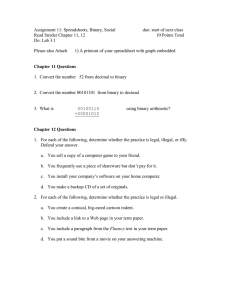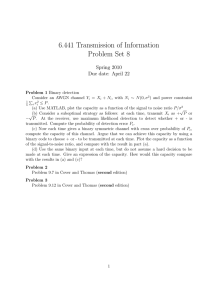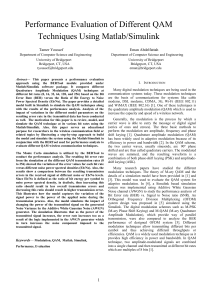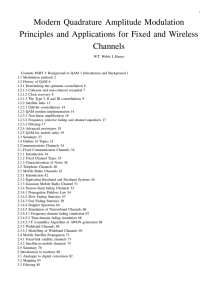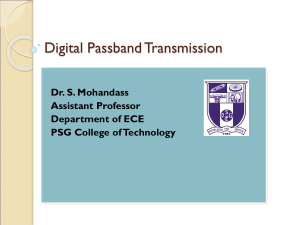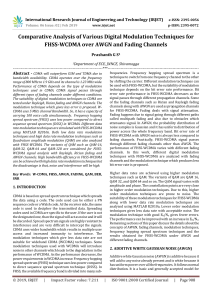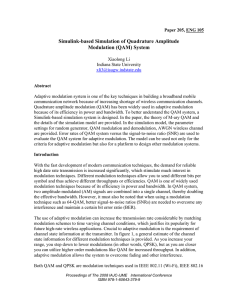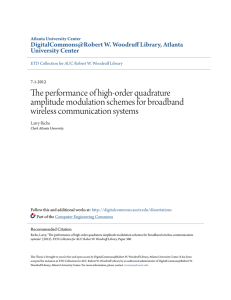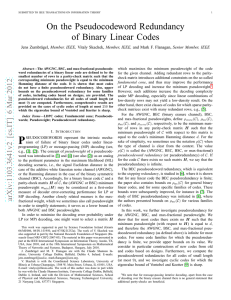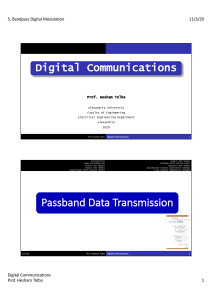ECE 614 – Principles of Digital Communications Homework 5
advertisement
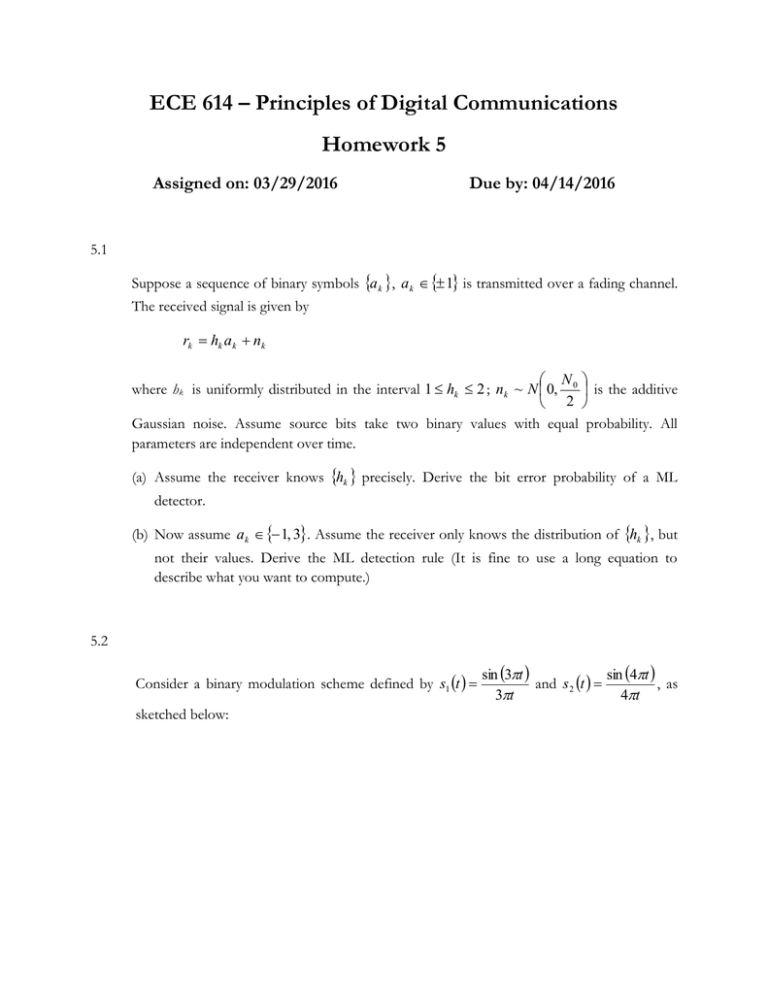
ECE 614 – Principles of Digital Communications Homework 5 Assigned on: 03/29/2016 Due by: 04/14/2016 5.1 Suppose a sequence of binary symbols a k , a k 1 is transmitted over a fading channel. The received signal is given by rk hk ak nk N where hk is uniformly distributed in the interval 1 hk 2 ; nk ~ N 0, 0 is the additive 2 Gaussian noise. Assume source bits take two binary values with equal probability. All parameters are independent over time. (a) Assume the receiver knows hk precisely. Derive the bit error probability of a ML detector. (b) Now assume ak 1, 3. Assume the receiver only knows the distribution of hk , but not their values. Derive the ML detection rule (It is fine to use a long equation to describe what you want to compute.) 5.2 Consider a binary modulation scheme defined by s1 t sketched below: sin 3t sin 4t and s 2 t , as 3t 4t 1 s1 t 0.8 0.6 0.4 0.2 0 -0.2 -0.4 -3 -2 -1 0 1 2 3 0 1 2 3 1 s2 t 0.8 0.6 0.4 0.2 0 -0.2 -0.4 -3 -2 -1 (a) Place a point in the power-vs-bandwidth plane for this modulation scheme, assuming ML detection in AWGN and Pe 10 6 (b) At this particular spectral efficiency, what is the gap to capacity (in dB)? 5.3 Put a point in the normalized-power versus normalized-bandwidth plane for the following so-called “cross QAM” constellations: M=32 M=128 Both are subsets of larger “square” QAM alphabets. Assume AWGN and ML detection Pe 10 6 . 5.4 Consider a binary linear block code C with parity-check matrix H and minimum Hamming distance d H ,min between codewords. (a) Show that d H ,min is equal to the minimum number of columns of H that can be added to produce 0. (b) Use part (a) to show that for all binary linear block codes d H ,min n k 1



